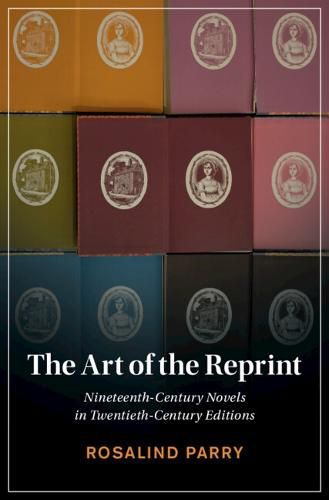Readings Newsletter
Become a Readings Member to make your shopping experience even easier.
Sign in or sign up for free!
You’re not far away from qualifying for FREE standard shipping within Australia
You’ve qualified for FREE standard shipping within Australia
The cart is loading…






The Art of the Reprint is a vivid and engaging history of the nineteenth-century novel as it was re-imagined for everyday readers by four extraordinary twentieth-century illustrators. It focuses especially on four reprints: a 1929 edition of Thomas Hardy’s The Return of the Native (1878) with engravings by Clare Leighton, a 1930 edition of Herman Melville’s Moby Dick (1851) with images by Rockwell Kent, a 1943 edition of Charlotte Bronte’s Jane Eyre (1847) with woodblocks by Fritz Eichenberg, and a complete set of Jane Austen’s novels (1786-1817) illustrated from 1957 to 1974 by Joan Hassall. Taken together, these reprints are indicative of a legacy crafted from historical distance, through personal, political, and artistic circumstance, and for a new century. With biographical, archival, and art- and literary-historical sources as well as close readings of images and texts, this is a richly illustrated account of how artists reinvent canons for the general reader.
$9.00 standard shipping within Australia
FREE standard shipping within Australia for orders over $100.00
Express & International shipping calculated at checkout
The Art of the Reprint is a vivid and engaging history of the nineteenth-century novel as it was re-imagined for everyday readers by four extraordinary twentieth-century illustrators. It focuses especially on four reprints: a 1929 edition of Thomas Hardy’s The Return of the Native (1878) with engravings by Clare Leighton, a 1930 edition of Herman Melville’s Moby Dick (1851) with images by Rockwell Kent, a 1943 edition of Charlotte Bronte’s Jane Eyre (1847) with woodblocks by Fritz Eichenberg, and a complete set of Jane Austen’s novels (1786-1817) illustrated from 1957 to 1974 by Joan Hassall. Taken together, these reprints are indicative of a legacy crafted from historical distance, through personal, political, and artistic circumstance, and for a new century. With biographical, archival, and art- and literary-historical sources as well as close readings of images and texts, this is a richly illustrated account of how artists reinvent canons for the general reader.